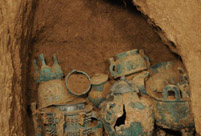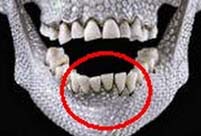 Deng Xiaoping: 'I have a clear conscience all my life'
Deng Xiaoping: 'I have a clear conscience all my life'
 Xi Jinping: 'The people are our strength'
Xi Jinping: 'The people are our strength'
 Amazing cliff diving in cold winter
Amazing cliff diving in cold winter
 Enjoy Sochi 2014 in slow motion
Enjoy Sochi 2014 in slow motion
 University student sentenced to death for poisoning roommate
University student sentenced to death for poisoning roommate
 Chinese lunar New Year celebrated in San Francisco
Chinese lunar New Year celebrated in San Francisco
 Taiwan Lantern Festival 2014
Taiwan Lantern Festival 2014
 Haiyang Yangge: make up
Haiyang Yangge: make up
 China's top 10 richest cities
China's top 10 richest cities
A red alert indicates the most serious air pollution (AQI above 300) for three consecutive days. An orange alert indicates heavy to serious air pollution (AQI between 200 and 300) alternately for three consecutive days. A yellow alert indicates severe pollution for one day or heavy pollution for three consecutive days.
A red alert requires traffic to be cut with alternate driving days for even- and odd-numbered license plates, and schools to be suspended. Industrial plants are closed or told to reduce production when an orange alert is issued.
Despite a spate of control measures, Beijing and neighboring cities, mainly in Hebei Province, are prone to frequent air pollution.
The current smog, which started on Thursday, is also forecast to persist in other northern regions, including Tianjin, Hebei, and parts of Shandong, Shanxi, Shaanxi, Henan and Liaoning for the next three days, according to the China Meteorological Administration.
A cold front is forecast to ease or disperse the smog on Thursday, said the administration.
While the cold front is days away, regions are rolling out emergency measures to battle air pollution, which is increasingly a source of complaints and frustration among urban residents.
Authorities in Shanxi have ordered outdated production facilities to suspend production to improve pollutant treatment. Hebei dismantled some high-polluting steel mills Sunday to reduce annual capacity by 6.7 million tonnes, part of its efforts to cut steel capacity by 60 million tonnes between 2013 and 2017.
Authorities in Shijiazhuang, capital of Hebei, ordered the removal of one-fifth of vehicles from roads based on the last digit of the license plate starting Sunday. A similar measure went into effect in Tianjin on Sunday.
To help tackle pollution in the long term, the municipal government in Tianjin went further to launch a clean energy initiative on Monday, saying it will promote the use of 12,000 new energy vehicles mainly in the public transport and logistics sectors.

 Chinese Dream: the Chinese Spirit and the Chinese Way
Chinese Dream: the Chinese Spirit and the Chinese Way 51 bronze sacrificial utensils unearthed in Shaanxi province
51 bronze sacrificial utensils unearthed in Shaanxi province Most gorgeous female celebs in Chi-pao
Most gorgeous female celebs in Chi-pao Second round of test kicks off at Beijing Film Academy
Second round of test kicks off at Beijing Film Academy Ancient Qiang people had vertically grown teeth
Ancient Qiang people had vertically grown teeth Top 10 Chinese youth’s favorite seaside destinations
Top 10 Chinese youth’s favorite seaside destinations Traditional Tibetan clothing tailors
Traditional Tibetan clothing tailors In photos: Unveiling Taishan station
In photos: Unveiling Taishan station Beautiful moments of family reunion
Beautiful moments of family reunion Chinese warplanes C919 to appear at Singapore Airshow 2014
Chinese warplanes C919 to appear at Singapore Airshow 2014 Ruins of Shang Dynasty's structure unearthed in Shaanxi
Ruins of Shang Dynasty's structure unearthed in Shaanxi  Intercity high speed train in operation
Intercity high speed train in operation Severe coldness freezes large parts of China
Severe coldness freezes large parts of China  Beautiful moments of Sochi
Beautiful moments of Sochi  It's not just performing this year
It's not just performing this yearDay|Week|Month